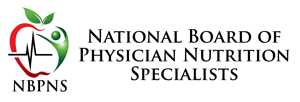Human Milk: What’s the Difference?
- QUALITY vs. QUANTITY
- In general, the composition of human milk is largely independent of maternal nutritional status; exceptions include vitamins (esp water soluble), fatty acids, possibly total fat;
- Maternal mal- or under-nutrition (+ other maternal problems &/or infant problems) more likely to affect quantity of milk.
- Effect of maternal fluid intake on milk output: “generous” intake important to meet the demands of fluid out daily in milk (~750 ml/d); drinking extra fluid will not increase milk supply, but inadequate fluid intake can compromise output.
- Energy density of human milk: ~ 20 kcal/oz (0.67 kcal/cc)(varies some with fat content of given feeding; & may be slightly less by some estimates)
- Composition of energy in milks:
Human Milk Cow’s Milk Formula Sea Lion FAT 50% of kcal 50% 50% 85% PRO 6% 21% 9% 15% CHO 40% 30% 41% 0
- PROTEIN
- Quantity (g/100 ml):
Human milk: 0.8 – 1.1
Cow’s milk: 3.4
Formula: 1.5Amount of protein in human milk is adequate for normal growing infant; if infant ill or malabsorbing, may be inadequate.
- Protein Quality:
- Whey vs. caseinwhey: clear fluid remaining after milk clots; contains water, electrolytes, protein; proteins easily digested and form soft curds; more rapid gastric emptying
casein: protein which forms hard curd with minerals when exposed to acid environment of stomach; can form lactobezoars (bezoar = concretion formed in gi tract; can obstruct gastric)
whey to casein ratio:
Human milk: 60:40
Cow’s milk: 20:80 - Taurine:
- sulfur containing amino acid; 2nd most abundant free a.a in human milk; involved in bile acid conjugation;
- newborn bile acids almost exclusively conjugated with taurine, which forms more soluble bile acid;.
- recent evidence suggests function as a neurotransmitter in brain and retina; may have general role in development and membrane stability.
(Kittens: milk very high in taurine. If feed a taurine deficient milk, develop retinal degeneration and blindness.)
Human milk: 3.7 g taurine/100 ml
Cow’s milk: less than 1 g taurine/100 ml - Lactoferrin:
- an iron-binding protein, part of the whey fraction in human milk; inhibits growth of iron-dependent bacteria in the gi tract; administration of iron to infant inactivates lactoferrin by saturating it with iron; only trace amounts of lactoferrin in cow’s milk and formulas
- Whey vs. caseinwhey: clear fluid remaining after milk clots; contains water, electrolytes, protein; proteins easily digested and form soft curds; more rapid gastric emptying
- Quantity (g/100 ml):
- LIPIDS
General: Both human and cow’s milk provide approximately 3-4% fat,and fats provide ~50% of the calories.Essential fatty acid: linoleic acid
Human milk: 540 mg/100kcal (7% kcals)
Cow’s milk: 125 mg/100kcal (1% kcals)Alpha-linolenic acid , another polyunsaturated fatty acid in the omega 3 family; the latter are high in marine oils, can be processed further (via elongation and desaturation enzymes) to form 20 and 22 carbon fatty acids. These omega-3 fatty acids are critical to brain development, cell proliferation, myelination and retinal function.
Although alpha-linolenic acid is contained in formulas, newborns, especially premature infants, are unable to convert alpha-linolenic acid to the longer chain polyunsaturated omega-3 fatty acids. Human milk (both pre-term and term) contains both linolenic as well as the omega-3′ s .
Cholesterol : Human milk contains 22 mg/100 kcal; formulas contain less than 1 mg/100 kcal.
- MINERALS
Human Milk Cow’s Milk Formula Calcium (mg/100 ml) 27 124 46 Phosphorus (mg/100 ml) 15 93 32 Sodium (mEq/100 ml) .7 2.1 .8 Zinc (mg/100 ml) .27-.07 .4 .5 Iron (mg/100 ml) 0.04 .0.05 0.11 (1.28) The minerals are present in human milk at levels less than or comparable to cow’s milk but in forms that are highly bioavailable (ie, better absorption &/or conservation). Thus, human milk generally meets the mineral requirements for normal infants. (Levels added to formulas are higher to compensate for the less favorable absorption.)
Concentrations of minerals in human milk generally decline over time; zinc is most dramatic, slowing ~parallel with slowing of infant growth rate; the changes in concentration are likely beneficial to mother by minimizing her nutritional demand; mechanism by which such longitudinal changes in mineral secretion occur is not known.
Renal Solute Load: The relatively low protein, sodium, potassium, and chloride levels in human milk provide a low renal solute load, which is beneficial because of the young infant’s limited ability to concentrate the urine.
What about supplementation in breastfed infants?
Iron: some source of dietary iron by 4-6 mo (1 mg/kg/d)
(some recommendations to supplement from birth; controversial – why?)
Fluoride:
Council on Dental Therapeutics (1994): no systemic fluoride supplements 0-6 mo (mixing formula w/ fluoridated tap water okay); (note: supplementing mother with flouride will not influence milk fluoride levels)
- VITAMINS
Water soluble vitamins most vulnerable to effects of inadequate maternal intake.When might a breastfed infant become deficient in:
- Vitamin B12
- Thiamin
- Folate
- Vitamin D
Fat soluble vitamins usually only problematic if malabsorption.
Vitamin D quite low in human milk; also low in cow’s milk but nearly universally fortified in U.S.; formulas contain 40 IU/100ml
What about vitamin supplements for breastfed infants?
Vitamin D: American Academy of Pediatrics: 400 IU/d
(others: only if unable to expose infant to regular sunlight; black breastfed infants most vulnerable & most commonly reported w/ rickets); sunlight “doses” for Vit D: 30 min/wk -total body; 2 hr/wk – head;
Vitamin K: prophylaxis at birth recommended by ~ all.
References:
- Lawrence, RA. Breastfeeding. A Guide for the Medical Profession. 5th ed. Mosby-Year Book, 2000
- Fomon SJ. Nutrition of Normal Infants. Mosby-Year Book, 1993 (a classic text)
- Committee on Nutrition, American Academy of Pediatrics. Pediatric Nutrition Handbook, 1999.
- Lonnerdal B. Effects of maternal dietary intake on human milk composition. J Nutr 116:499-513, 1986.
- Worthington-Roberts B, Williams SR. Nutrition in Pregnancy and Lactation, 5th ed. Mosby, 1993. (excellent reviews of lactation, human milk, etc)
- Institute of Medicine: Nutrition during Lactation, Washington, DC, 1991, National Academy of Sciences.
